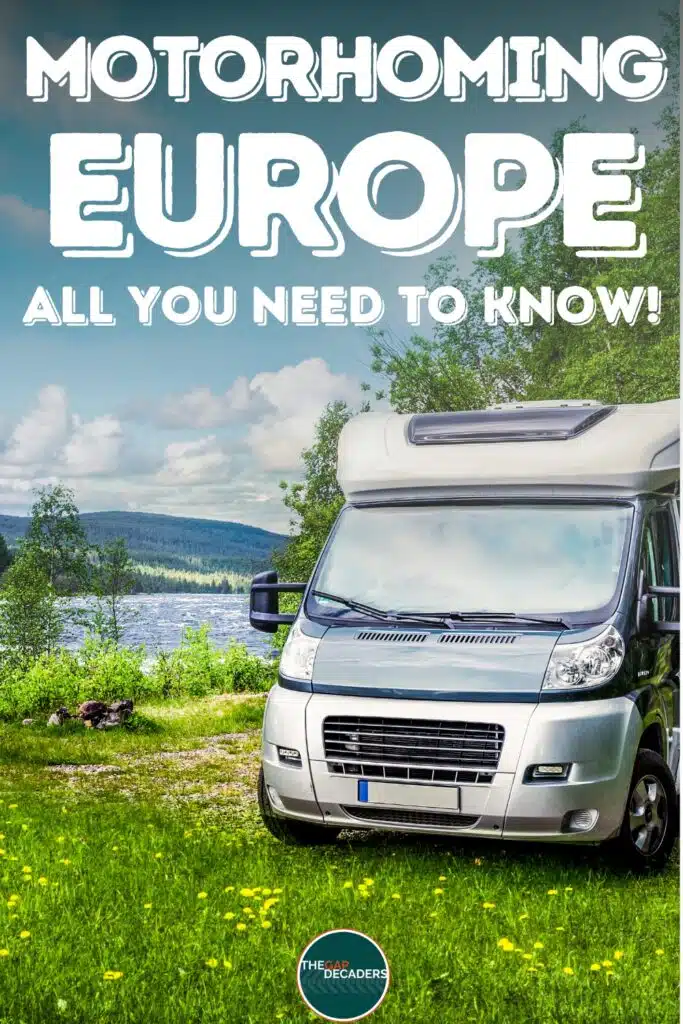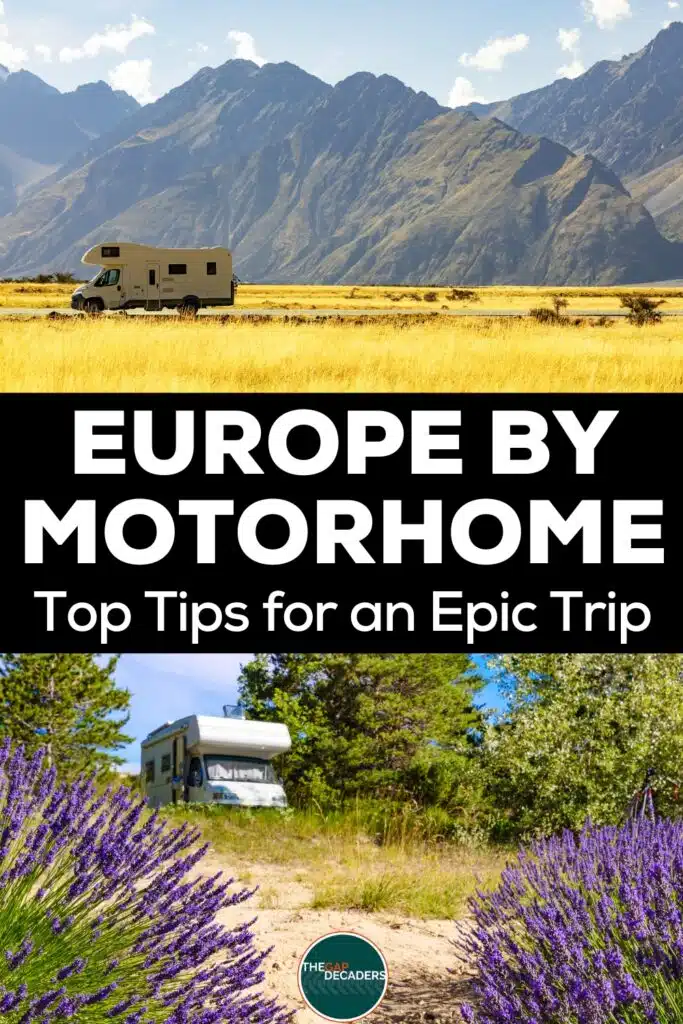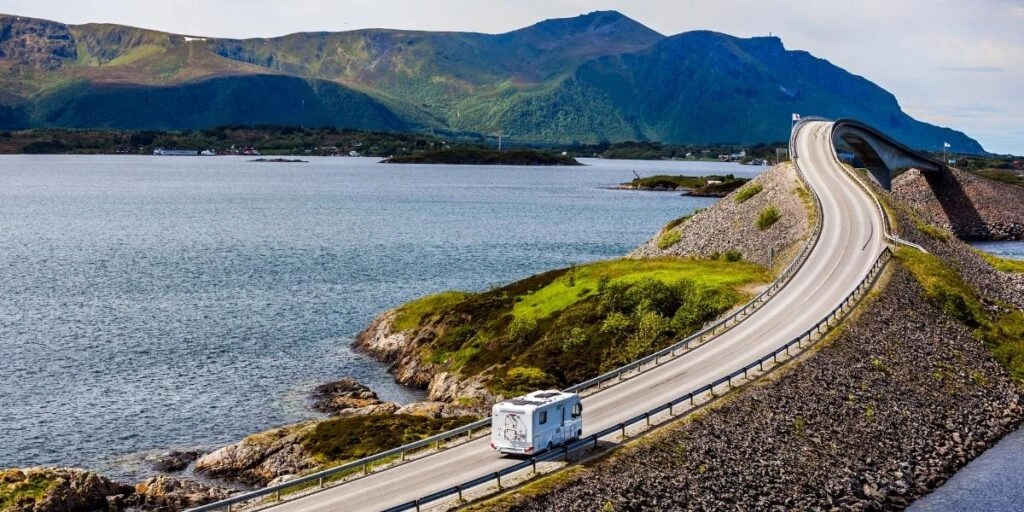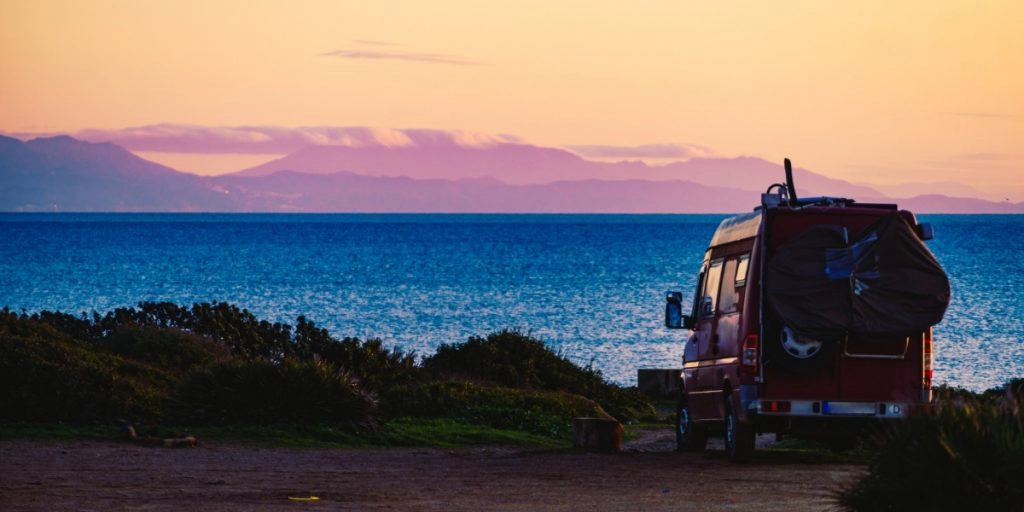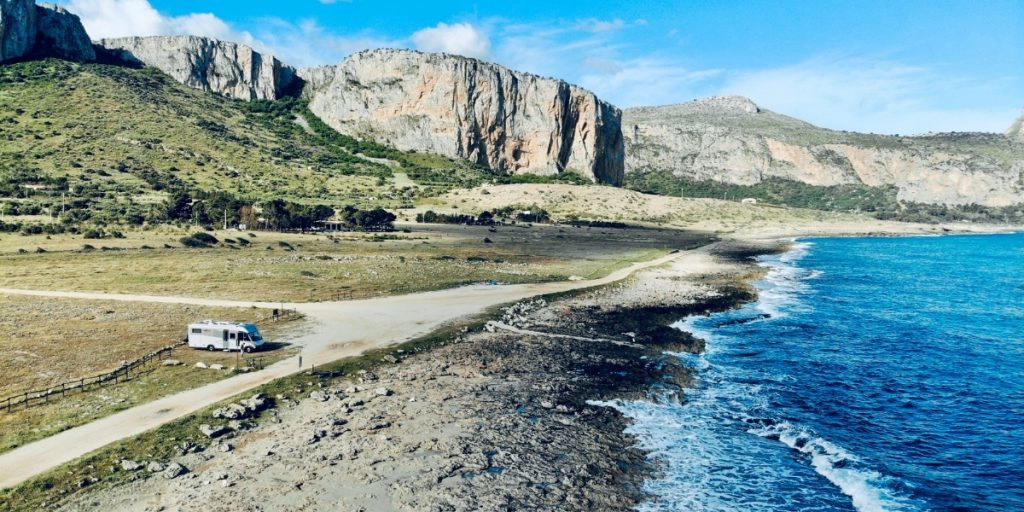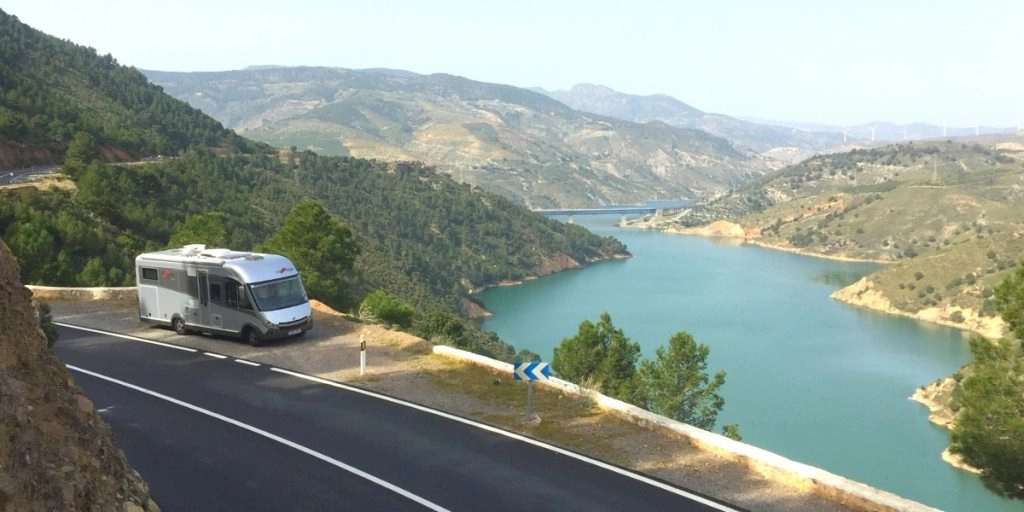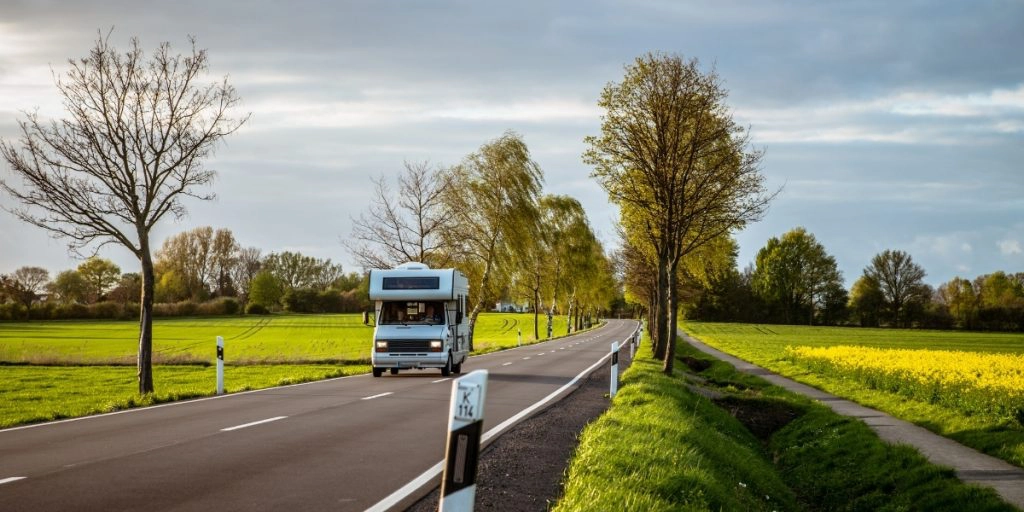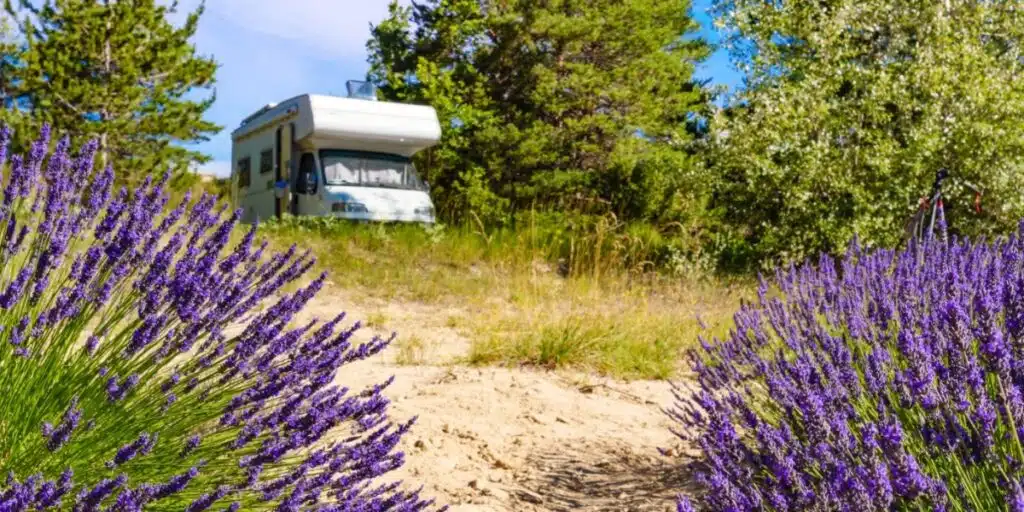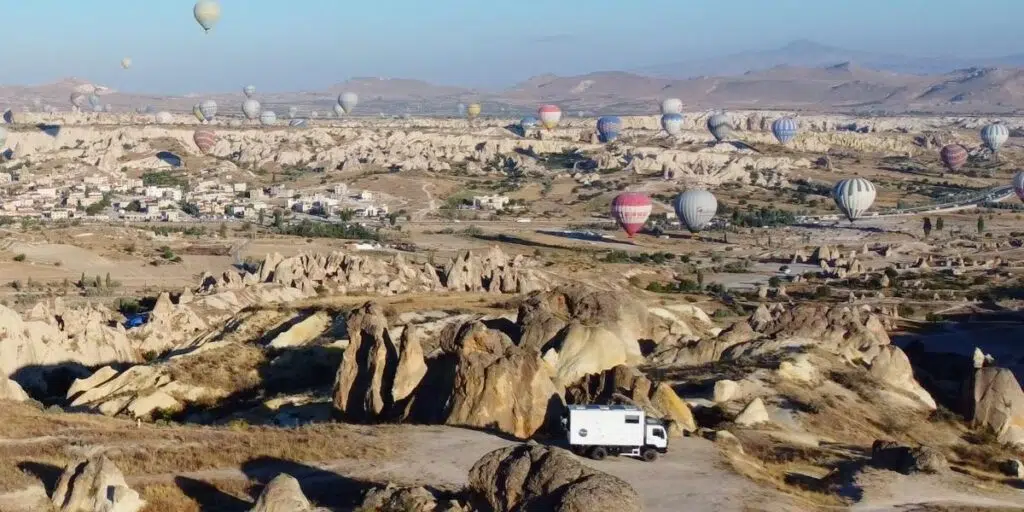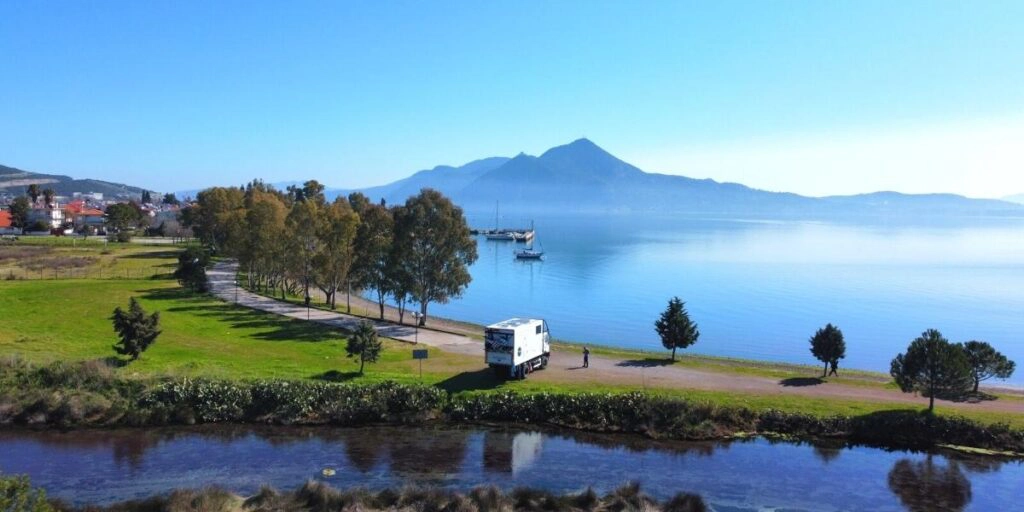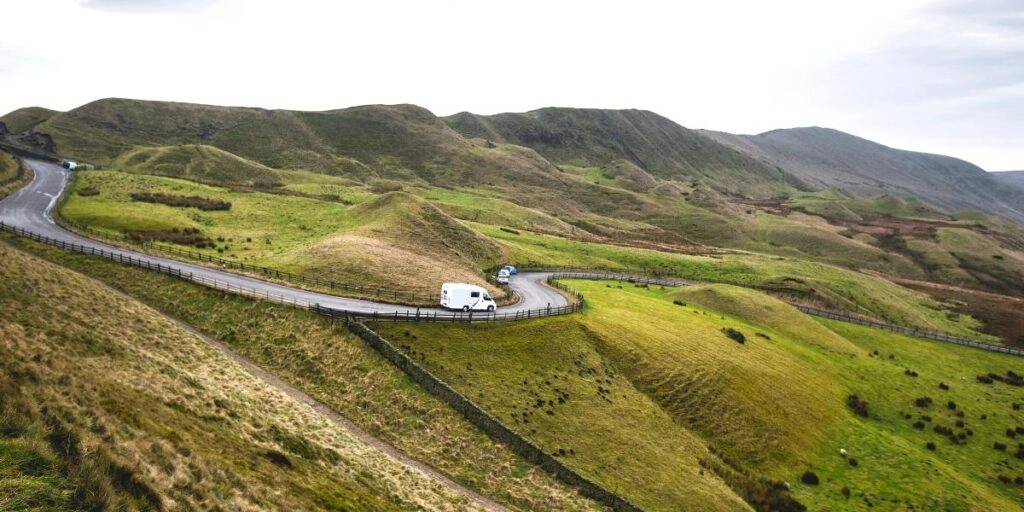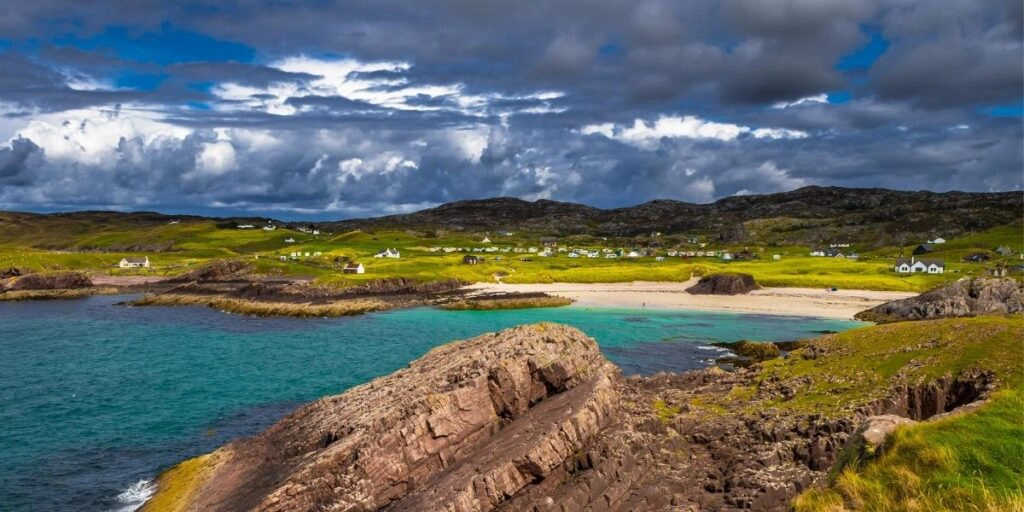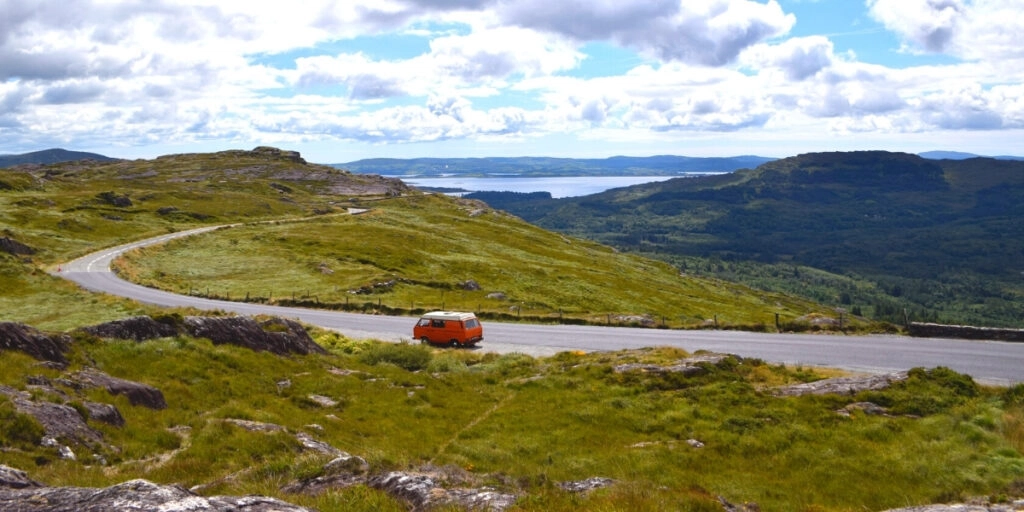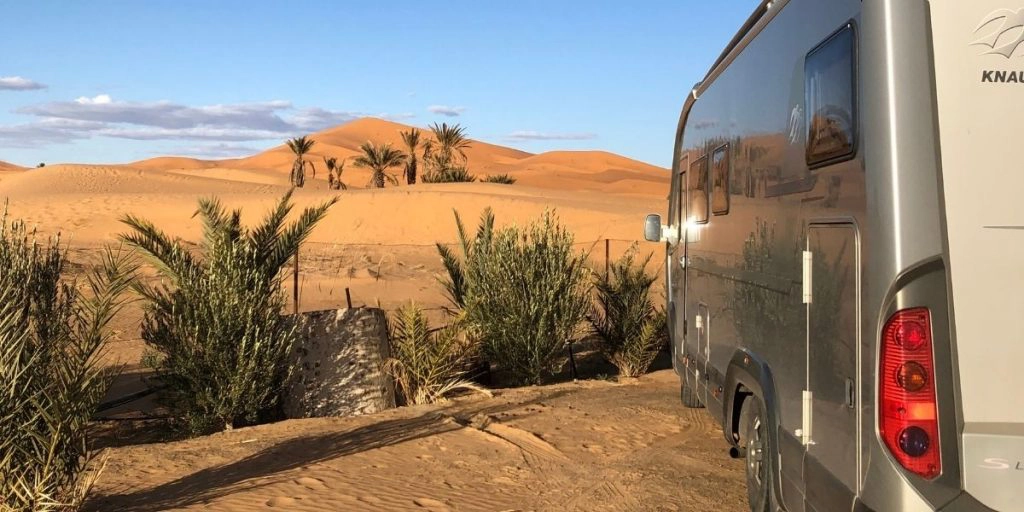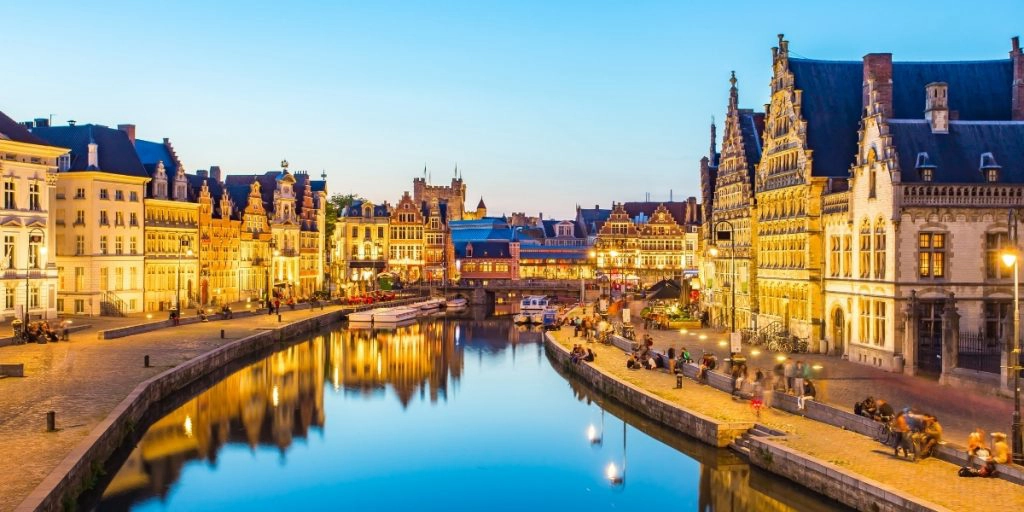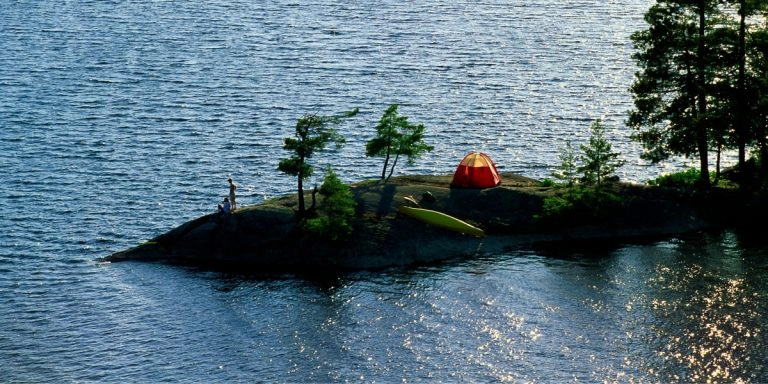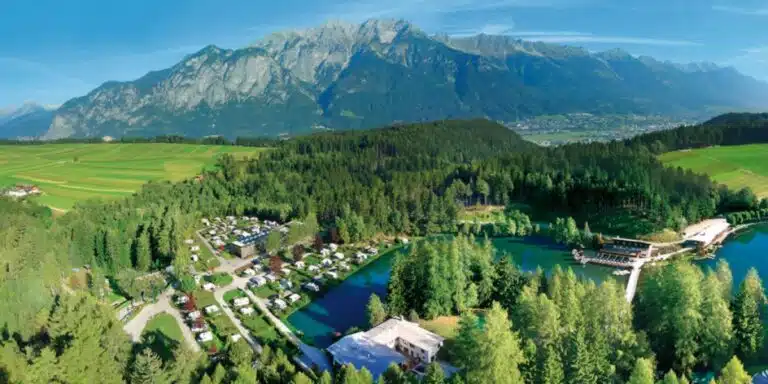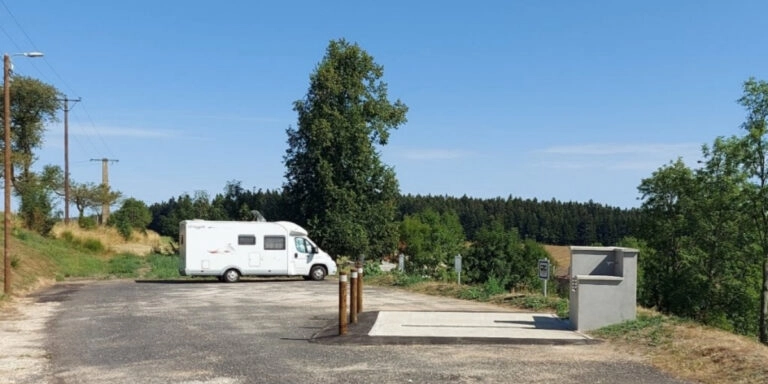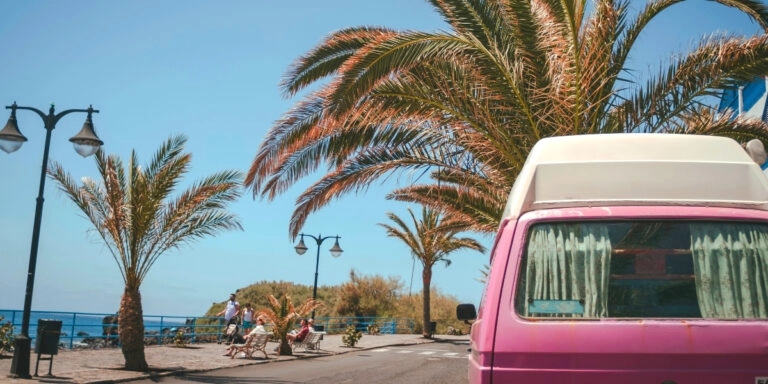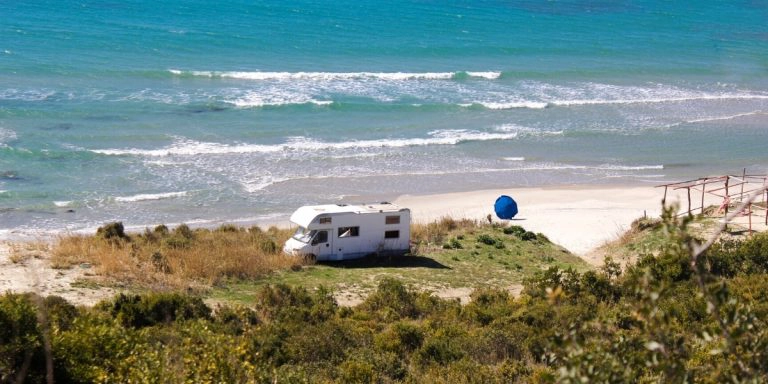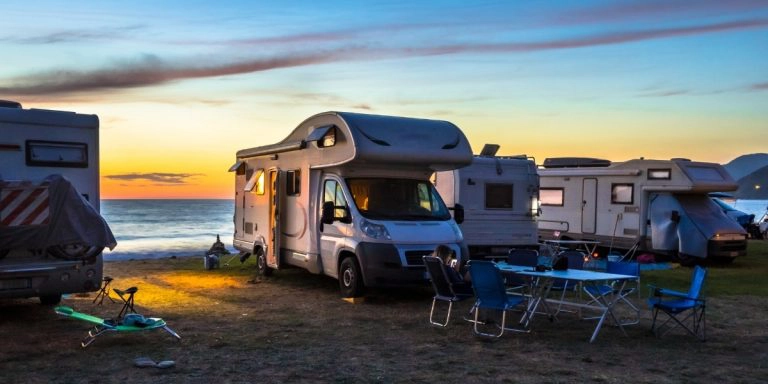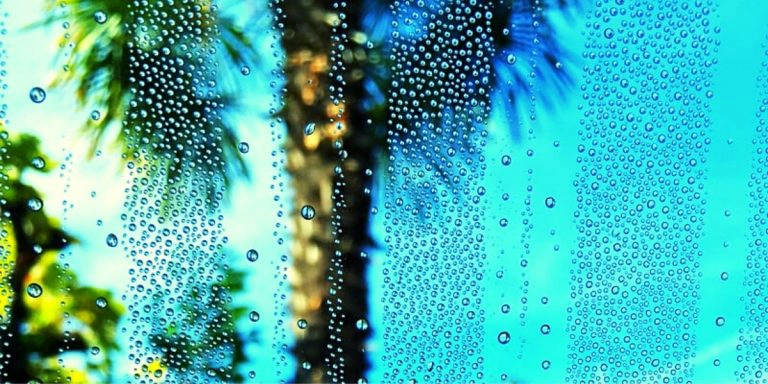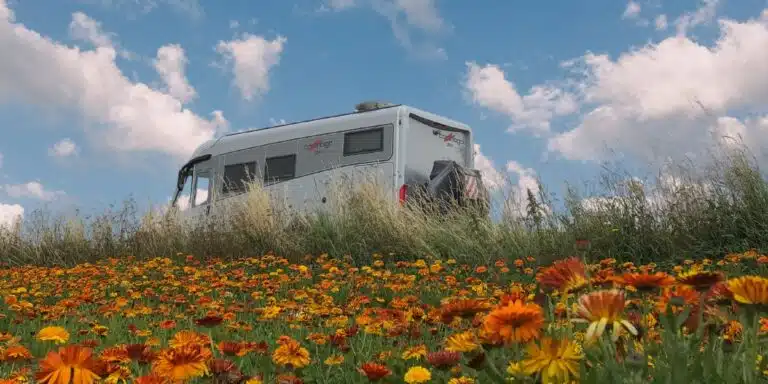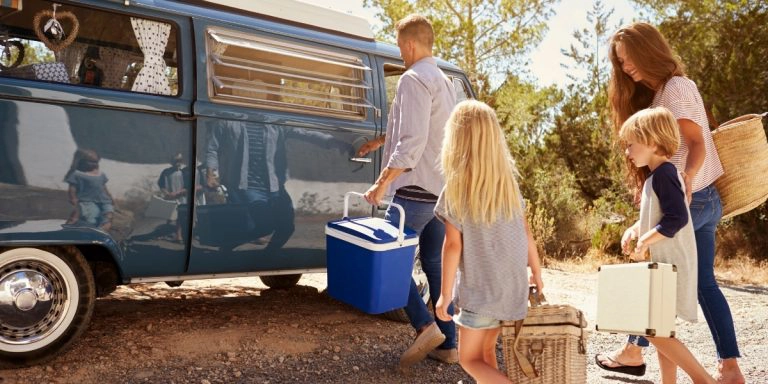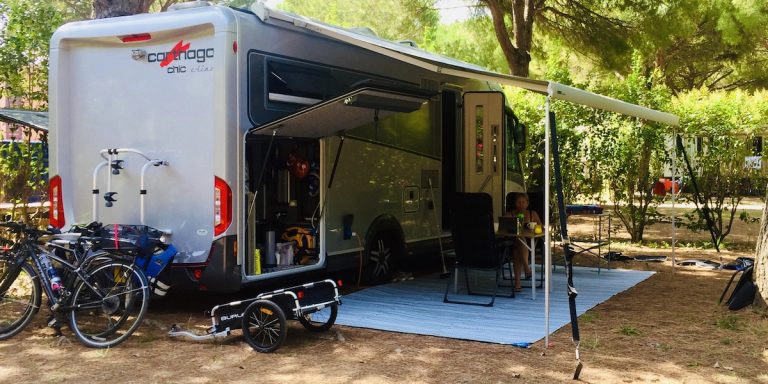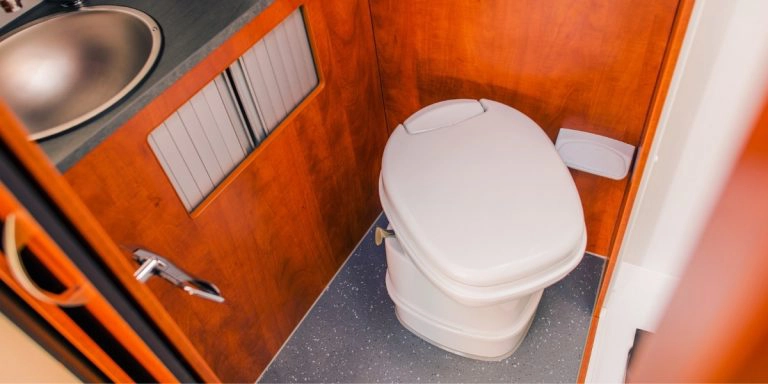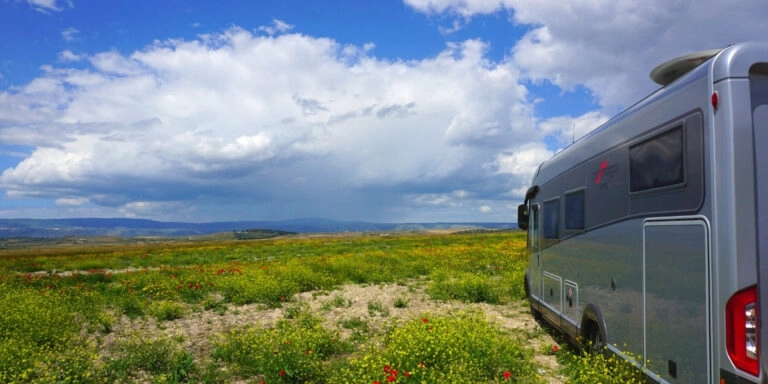This post may contain affiliate links, from which we earn an income. Click here to read our affiliate policy.
Campervan and motorhome touring in Europe
When we got our first motorhome, we packed it – terribly, I might add – and set off for Dover, completely clueless. Back then, the internet wasn’t a thing, so we had to figure everything out on the go. Honestly, we would have loved a guide for our first European motorhome trip because, well… we had no idea what we were doing!
We miscalculated costs, ran out of gas within days, and ended up in some truly awful campsites. But despite the chaos, it was an unforgettable adventure. The freedom, the spontaneity – we were hooked! And ever since, we’ve been exploring Europe in our motorhome, making memories along the way.
If you’re dreaming of your own European motorhome adventure, our guide has you covered. From essential paperwork to route planning and practical tips, we’ll walk you through everything you need to know so you can hit the road with confidence!
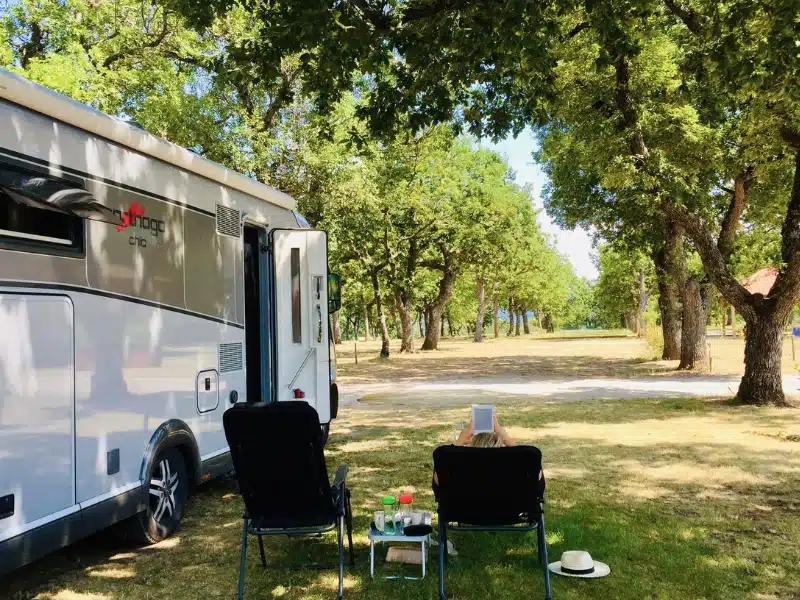
Feeling Daunted? Don’t Worry!
It’s completely normal to feel a little intimidated before setting off on your first European motorhome adventure. There’s a lot to think about – getting there, different road laws, overnight stays, and ensuring you have the right equipment.
But don’t worry! Thousands of people successfully motorhome across Europe every year, and with some preparation, you’ll be able to do the same. The key is to research, plan your route (but stay flexible), and learn from experienced travellers.
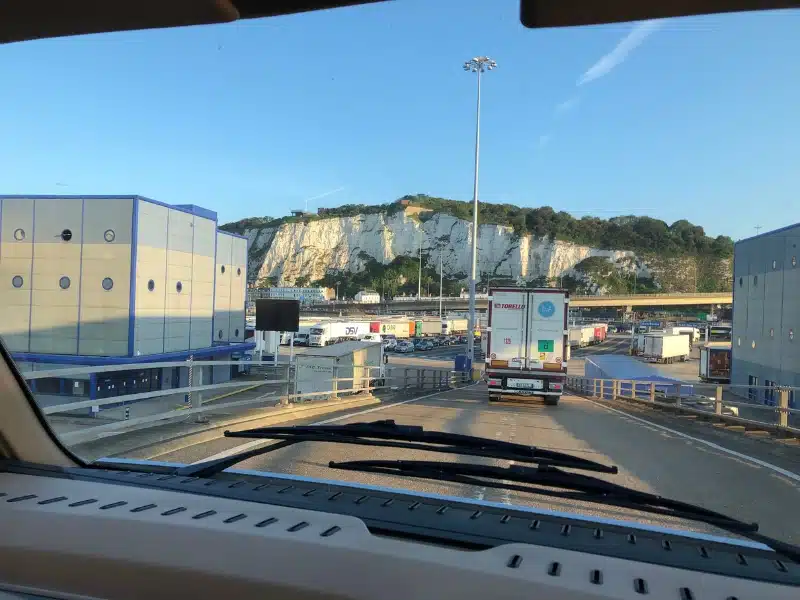
Documents You Need for Europe
Passport: You must have at least three months remaining on your passport (issued in the past ten years) at your intended date of departure. If you’re travelling in a motorhome to Ireland from the UK, you do not need to carry your passport as there are no borders and Ireland is part of the Common Travel Area – but we always carry ours, just in case!
Vehicle Insurance: You must have at least 3rd party insurance for your motorhome and scooter if you carry one. You do not require a green card to prove you have motothome insurance cover when travelling in the EU countries of Europe if your motorhome is registered in the UK. Check with your insurance company whether you’re covered in non-EU countries like Montenegro, Serbia and Albania – even though the UK Government offers advice, in our experience, insurance companies do not always follow this!
Tax and MOT: To be road legal in a foreign country, your motorhome must be taxed and have a valid MOT in the UK.
Licence: You must have a valid UK driving licence is needed for the category of motorhome you are driving. This allows you to drive in all EU countries for up to six months. If you only have a paper driving licence or a licence issued in Gibraltar, Guernsey, Jersey or the Isle of Man, then you will need an International Driving Permit.
Registration Document: You must carry the original V5C registration document for your motorhome.
GHIC: Whilst it is not mandatory, we strongly recommend carrying a GHIC card which covers you for emergency and necessary healthcare in the EU. Find out why the GHIC is an essential for touring in Europe!
Travel Insurance: The UK GHIC is not a replacement for travel insurance and will not cover things like repatriation, medical evacuation, specialist treatment or ongoing care. We recommend True Traveller for their 5-star TrustPilot reviews, variety of cover options, best activities cover as standard, great prices, and excellent service.
Breakdown Cover: Although not mandatory, it’s a good idea to have cover when driving in Europe. We recommend RAC Arrival, whose motorhome cover has no weight, height or length restriction. We have only needed their support once (in Greece with a blowout) and they were excellent.
Entry Requirements: Technically, you could be asked for evidence of a return ticket and that you have enough funds to cover your stay. Having said that, in the 4+ years since Brexit, we don’t know anyone who has been asked to produce either a ticket or evidence of their financial position.
EES and ETIAS: From an as yet unknown date in 2025, the EU will introduce the EES (European Entry/Exit System) to register non-EU nationals travelling for a short stay and ETIAS (European Travel Information and Authorisation System), which will be an additional entry requirement for visa-exempt travellers and will involve the traveller registering their details online before travelling, mainly for security purposes.
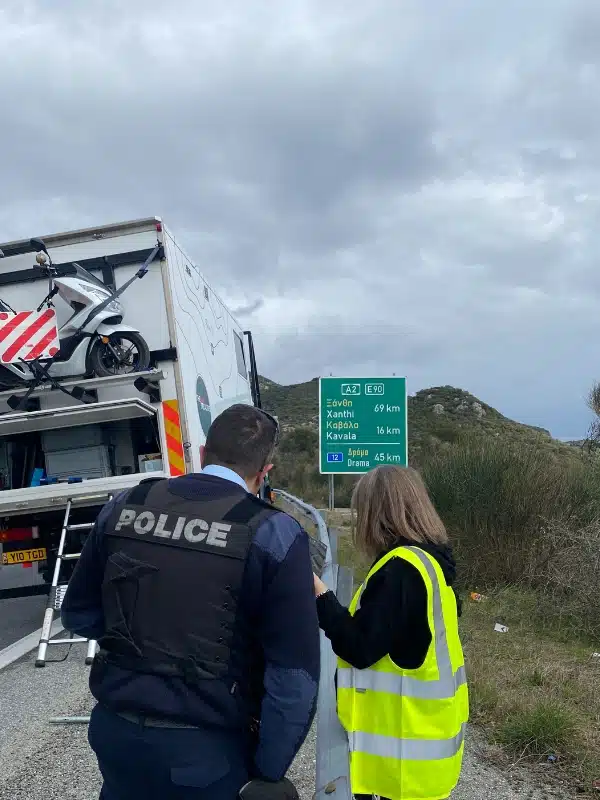
Schengen Rules
Since Brexit, UK travellers must adhere to the 90-day rule, meaning you can stay in the Schengen Area for up to 90 days in a 180-day period. Use a Schengen calculator to help you work out your days.
Long-term travelling by motorhome in Europe is still possible, but does involve leaving the EU countries and heading further afield. Find out how in our comprehensive motorhoming after Brexit guide and in our guide to motorhoming in Ireland, which due to being in the common travel area (CTA) has some different rules.
Borders between all Schengen countries have had border controls removed. However, you may find that random roadside checks are in place at border crossings due to the number of undocumented migrants travelling through Europe. Make sure to have your passports at hand when approaching country borders.
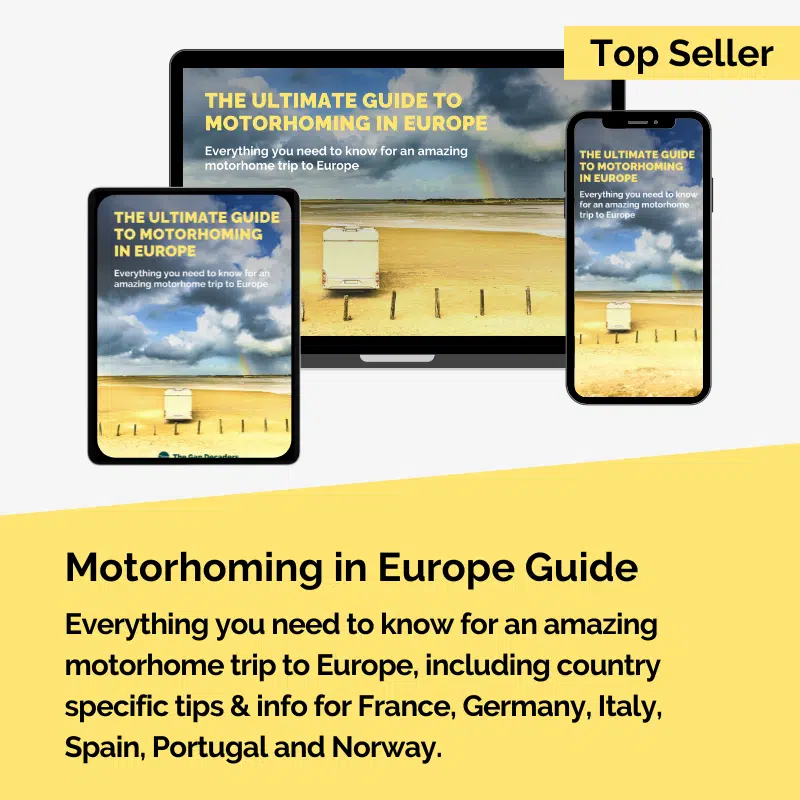
The Ultimate Guide to Motorhoming in Europe
If you’re planning a motorhome trip to Europe for the first time, our guide has top tips, advice and info to help you plan your tour.
Don’t struggle to plan your European trip, find out everything you need to know before you go + loads of motorhoming tips for when you arrive.
Taking a Pet to Europe
It can take some time to get all the documents you need together and the vaccines organised, so make sure you start the process well in advance. Find out more about travelling in Europe with a dog before you set off with your fur baby!

Taking Food from the UK to Europe
It’s easy to forget that the food in your fridge and cupboards may not be allowed in Europe. This is because the standards between the UK and the EU have changed since Brexit. Having said that, we and nobody we know has ever had their motorhome fridge checked.
Europe also has the most amazing supermarkets, full of delicious and familiar fresh produce, much of it locally grown. We usually stock up on a few things we know we can’t get, like curry paste, and then cook with whatever is available – or just eat croissants and drink wine!
The European Commission says the following:
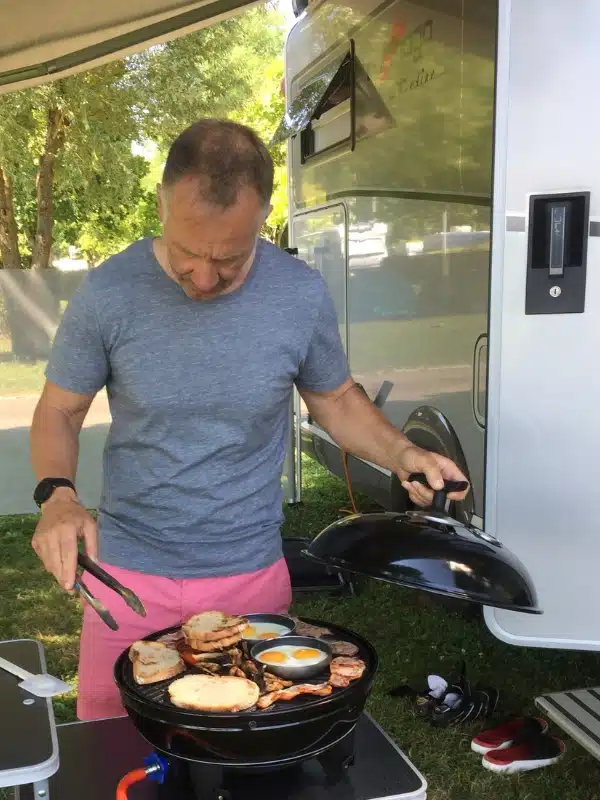
Mobile Data in Europe
Internet access in Europe very much depends on who your mobile phone contract is with and when you started the contract. All UK providers now limit data usage in the EU in some way or another, and it’s a good idea to check with your provider to make sure you don’t run up a big bill.
If you’re motorhoming in Europe for a few weeks, you’ll be able to use your UK allowance as part of your roaming agreement. Some providers charge a small daily fee for this. If you’re staying for longer, our guide to the best SIM cards in Europe shares all the different options, from local SIMs and eSIMs you can buy online.
We have been using ConnectPls for cloud SIM and eSIM connectivity in the UK and Europe. The service has been pretty faultless and you can choose from unlimited data packs to just single days, depending on your needs. Use the code ‘thegapdecaders’ at checkout to get 30% off in the first month!
Europe Motorhome Hire or Taking Your Own?
Taking your own motorhome to Europe is relatively simple. There’s no need to temporarily import your vehicle, even if you’re touring and you don’t need to have a left-hand drive van. Just make sure you have the right documentation described above and the required safety equipment, and you’re good to go.
If you’re new to motorhoming or taking your campervan to the continent for the first time, then a two-week holiday in Western Europe is a great way to start, especially if you rent a motorhome.
A reputable rental company will provide a fully equipped motorhome with everything you need for a comfortable trip, allowing you to experience the freedom and excitement of European motorhome travel.
Our recommended European campervan and motorhome hire company is Motorhome Republic, which has hundreds of pick-up locations across Europe, all perfect starting points to see all the best bits as you road trip Europe.
An aggregate motorhome and campervan booking site, Motorhome Republic pull together all the best deals from many different rental companies to offer you a wide choice of options alongside an excellent English-speaking expert motorhome Concierge Team.
If you’re coming from North America and are used to travelling in a recreational vehicle, motorhomes in Europe are a little different from RVs in the States. Styled differently and significantly smaller (even if it feels large to us Brits!), we generally don’t have slide-outs, full-sized appliances or beds in our motorhomes.
Most European motorhomes use cassette toilets, rather than having a black or black and grey waste tank, but you’ll be pleased to know that European motorhomes are usually left-hand drive, so just like travelling in an RV at home 🙂
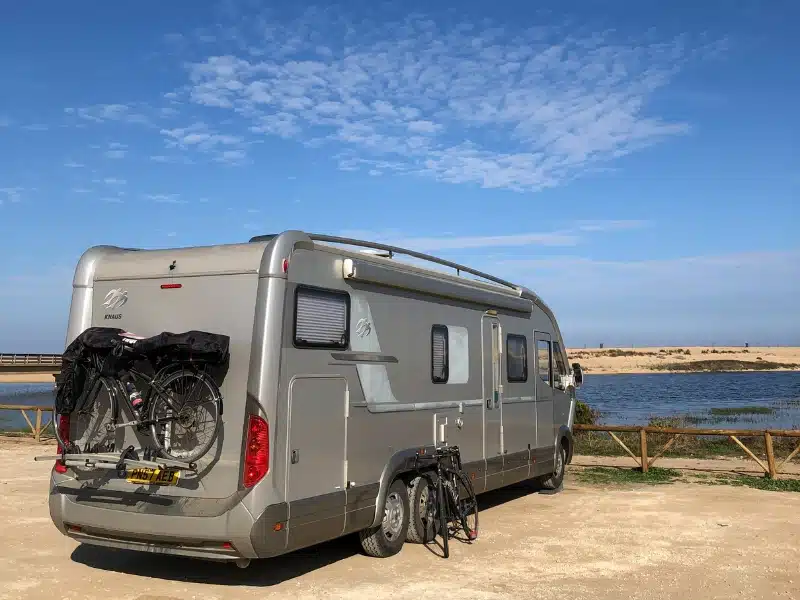
Preparing Your ‘Van for Europe
When we first set off as new motorhome owners, all we knew was that we wanted to escape the UK and spend several months in Europe. We had sold our house and quit our jobs, so didn’t have any time constraints.
If we’d done a bit more research and thought more about how we wanted to travel, we would have realised that we were lacking in some equipment that would have made touring in Europe easier and more budget-friendly!
What you change or add will depend on how much you want to spend and how you want to travel Europe in a motorhome:
For us, we have found the additions below to be worth the extra cost when spending more than a month or so on the continent. If you intend to travel long-term or regularly in Europe, then these motorhome accessories will pay for themselves.
Heating
If you’re planning on spending winter in mainland Europe, then you may need heating in your motorhome. Some areas in countries like Spain and Portugal are warm enough year-round for you to not need heating, but if you head into the mountains, then you could well be facing freezing temperatures.
RELATED POST: Winter in a Motorhome – Tips, Tricks & Essentials
Gas and LPG
You can’t take a UK gas bottle to Europe and exchange it. This means if you run out of gas, you’ll have to carry your empty bottle and buy a bottle in whichever country you are, as well as a suitable regulator. This is not difficult, but it is a hassle and an added expense.
Disposing of your empty bottle is illegal, and it’s also illegal to re-fill Calor gas-type bottles at the pump, so there really is no easy way to get gas if you’re not prepared.
If you’re touring for more than a month or so, we would highly recommend a refillable Gaslow or Gasit system with an external filling point. The system can be filled in any EU country (including the United Kingdom) at the pump using a set of special adaptors.
You’ll save money every time you fill as LPG (called GPL in Europe) from the pump is around 70% cheaper than buying it in a bottle.
The downside with a refillable system is that in the UK lots of garages have stopped selling LPG at the pump as the take-up of LPG vehicles has been surpassed by electric technology. A good compromise is to have one bottle on a refillable system and one UK bottle, and we hear about more and more people doing this.
If you’re planning to visit Morocco in your motorhome, gas at the pump isn’t available (nor in Finland), so this does need careful planning.
RELATED POST: An Easy Guide to Motorhome Gas & LPG in Europe
Solar
If you are planning on free camping in aires or wild camping in Europe (if you’re an off-grid camping newbie, it’s the ideal place to start), you will need equipment to ensure you have electricity when you’re overnight parking off-grid.
This might include a solar panel, and you may want to upgrade your leisure batteries. You could also consider a solar generator, which is portable and will provide you with enough power to wild camp as much as you like, as long as the sun is shining!
RELATED POST: An Easy Guide to Motorhome Electrics
Air Conditioning
With summer temperatures regularly getting into the early 40s in Europe, air conditioning can be a lifesaver. One summer in France, despite being dyed in the wool wild campers, we spent every night in a campsite or aire, just so we could plug in and have air con!
If a roof-mounted a/c unit is too expensive, take a look at portable air conditioning solutions – the technology has advanced in recent years, and some of them are pretty good. Make sure to check the size, though, as they can be large!
Awning
If you’re travelling in summer, then an awning of some description is an absolute must. Having one fitted retrospectively can be expensive, but a drive-away awning, a simple gazebo or even a collapsible umbrella can do the trick.
Water Filter
If you’re planning on visiting countries where the quality of potable water is questionable, or you don’t want to drink de-salinated water (common in eastern and southern Spain), then a water filter is a great option.
We have a Nature Pure filter fitted, a job a competent DIY’er could manage. We love not having to buy bottled water and then carting the empty bottles around until we find a recycling point.
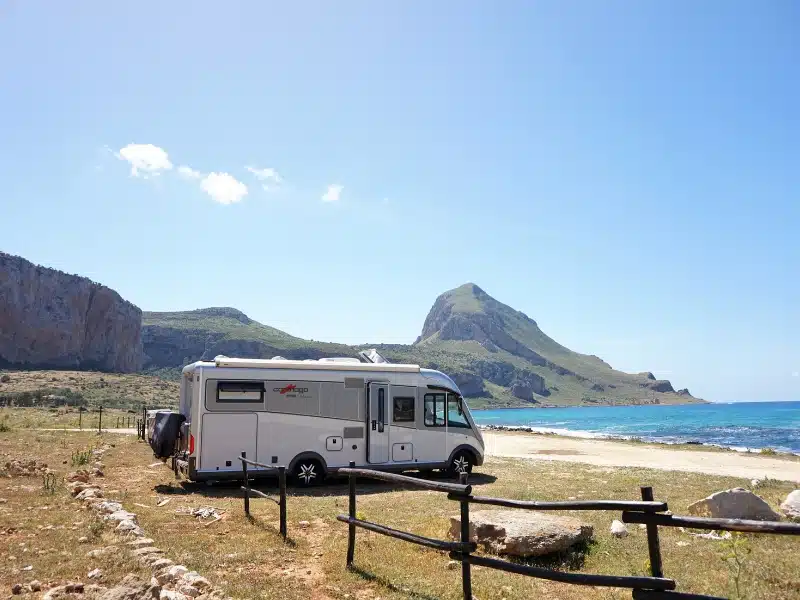
Essential Gear for Motorhoming in Europe
Have a look at our essential motorhome kit list for an idea of what kit and gear we think are important when taking a motorhome to Europe. You’ll also find links to a free motorhome packing list to download and print covering kitchen, garage, gadgets, safety equipment and personal essentials.
RELATED POST: 101+ Motorhome Essentials You Need + Packing Checklist
Motorhome Internet & Wifi
Connectivity is important if you want to stay in touch with loved ones, post on social media and keep up with what’s happening worldwide. If you’re in Europe for a few weeks, we’d suggest using your contract allowance under the EU ‘roam like at home’ scheme – even if there is a small daily fee, it will be cheaper than buying lots of new equipment.
If you plan on touring for longer than two months, this is the cut-off point for most UK providers to see you as a frequent traveller rather than a holidaymaker. Most providers limit you to using your UK data for every two months in four when you’re abroad.
There are lots of other options, though. In our guide to motorhome internet and WiFi, we look at eSIMs, local SIMs, cloud devices, satellite internet like Starlink, fixed systems, and UK non-contract suppliers like Popit, RWG and Tesco Mobile.
Motorhome TV
We all like a bit of TV, and being in Europe doesn’t change that. There are plenty of options for getting TV in a motorhome, and when you’re abroad, there are a few things to be aware of if you want to watch UK television (and yes, you probably will need a VPN!)
RELATED POST: Motorhome TV: Five Ways to Watch in Your Van
Bikes
You also need to consider how you’ll get out and about, especially if you intend to remain static on a site or an aire for more than a few days. A secondary form of transport gives you more options and enables you to explore without the hassle of finding somewhere to park a large vehicle.
If you’re in an urban area, local buses, trams and metros may work, and public transport is the best choice for city visits. If you’re more remote, you’ll want to be able to get to the nearest village or head out for a day.
Make sure you research thoroughly if you want to tow a car – the law regarding A-frames in Europe is often misquoted and not always clear. You may find some helpful information on various Facebook forums for motorhome owners, and on the UK Government website.
RELATED POST: The Best Motorhome Bike Racks & Bikes
Gross Vehicle Weight
What and how much you pack will also depend on the gross vehicle weight (GVW) of your motorhome, how much payload and how much storage space you have.
As a general observation, if you fill your storage space, you are likely to be overweight – just because you have loads of cupboards doesn’t mean you should fill them all!
Read our guide to understand how motorhome weights work, and don’t forget to include your toys like bikes, kayaks, gadgets and so on when thinking about weight.
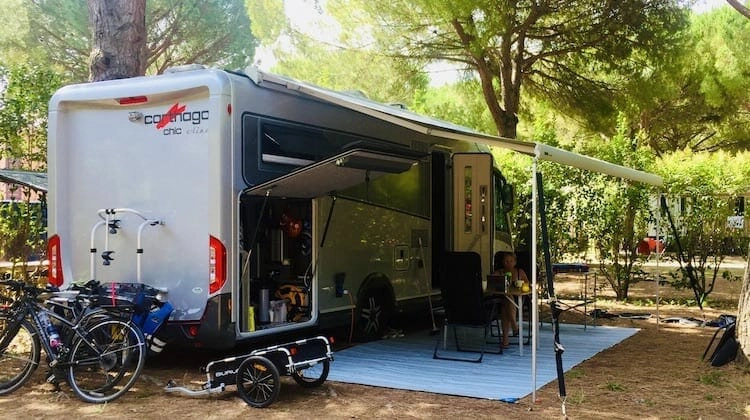
Getting to Europe in a Motorhome
Finally, after all that prep, you’re ready for the off!
There are at least 16 ferry routes and 100+ crossings a day between the UK and mainland Europe, sailing to the countries of France, the Netherlands and Spain. There are also eight routes between the UK and the island of Ireland.
EuroTunnel Le Shuttle offers 60+ crossings a day, taking just 35 minutes from Folkestone to Calais.
Which route you choose will depend on where you live in the UK and your destination in Europe. We use Direct Ferries to find and compare crossings, looking for less popular routes and sailing times to save money.
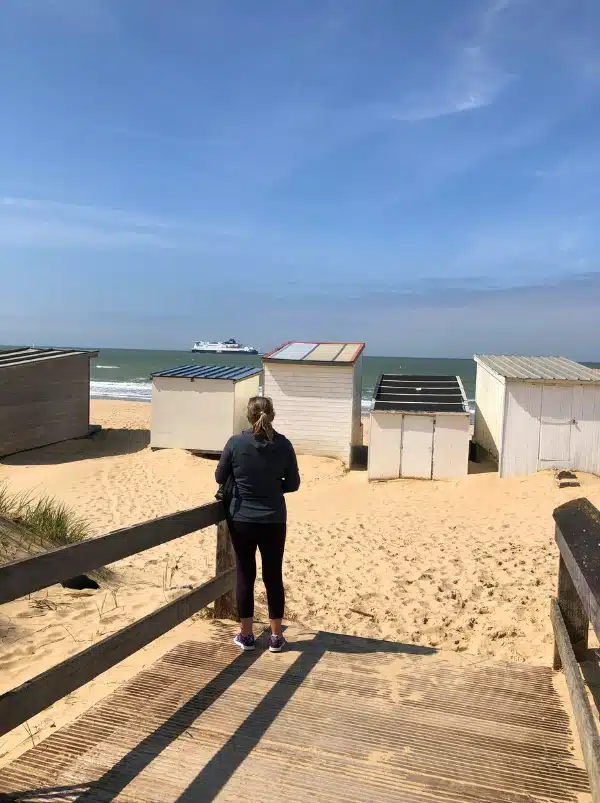
Driving a Motorhome in Europe
For many, driving their motorhome in Europe is one of the most daunting elements of a European tour. Driving a motorhome requires focus and knowledge wherever you are, but to drive on unfamiliar roads on the wrong side in a right hand drive motorhome can be quite stressful.
On the whole, driving in Europe is very safe – the continent has by far the lowest road traffic accident fatalities globally. Switzerland and Norway have the best safety records, with 1.71 and 1.76 deaths per 100,000, respectively. Bosnia and Herzegovina and Albania have the worst road safety records, with 10.79 and 9.88 fatalities per 100,000. Everywhere else is somewhere in between, with the UK at a low 2.81.
The best advice we can give is to take your time, make sure you understand the rules of the road for the country you’re visiting (our country-specific motorhome touring guides can help with that!) and take regular breaks to help calm your nerves. You’ll be please to know that Member states of the European Union have a standardised set of road signs, very similar to the UK.
We’ve had both right and left-hand drive motorhomes, and although LHD is a little easier, especially on narrow roads, right-hand drive is not a problem if you have a willing passenger!
Be aware that the Republic of Ireland, Malta and Cyprus all drive on the left, just like the UK.
Common EU Driving Rules
These rules are common across the whole of the EU:
Country Sticker: You must display a UK sticker on the rear of your vehicle unless your numberplate displays the flag or origin.
Modify Headlights: Headlamp beam deflectors (depending on your motorhome, you’ll either need deflector stickers or have to adjust the beam manually).
Wear Seat Belts: Under EU law, seat belts must be used in all vehicles. Children over 1.35m can use an adult seat belt. Those under 1.35m must use equipment appropriate to their size and weight when travelling in a car, like a car seat or booster cushion.
Using Mobile Phones: It is illegal in all countries of the EU to use a mobile phone when driving. In France, you are not even allowed to use a mobile phone using a hands-free device. On-the-spot fines are applicable in all countries if you are caught using a phone at the wheel.
Drive on the Right Side: Every EU country apart from Ireland drives on the right-hand side of the road. This means that when you’re at a junction or roundabout, the vehicle approaching from the right has priority over the one coming from the left unless other signage is in place.
Drink Driving: All EU countries have different alcohol limits set in their drink driving legislation which may be different or lower to your home country. It’s best not to drink any alcohol if you’re planning on driving anywhere afterwards.
Snow Tyres and Snow Chains: All European countries with mountains have rules about snow tyres and snow chains. Make sure you check these rules if you’re taking a road trip to Europe in colder weather.
Road Etiquette: In many European countries, certain discourteous behaviours, such as rude gestures in Germany and honking the horn without cause in residential areas in Spain and Italy, are offences for which you can be fined! Make sure you’re aware of the specific European driving laws for each of the different countries that you intend to visit.
In an Accident: If you have an accident you’ll need to complete the EU Accident Statement, which you can find to download in English in our free resource library if your insurer hasn’t provided one. Stop safely and use your hazard lights and warning triangle to alert other drivers. Exchange details (a translate app comes in handy here) and take plenty of photos to add to your form when you submit it to the insurers. If the other party won’t give details or there has been an injury, you should call the police on 112.
Vehicle Safety Equipment
Not all this equipment is compulsory in every EU country, but we think it’s the least you should carry:
Speed Limits for Motorhomes in Europe
Speed limits for motorhomes vary across Europe and can also vary depending on your weight. When you enter a new country, there is usually a roadside sign advising you of these limits.
If you use a sat nav, it will inform you of speed limits, as well as update you with traffic news, and let you know when you’ve crossed a border on your campervan journey.
Speed cameras are common in Europe and may be fixed or mobile. Both types of speed cameras can be visible or hidden, and it’s easy to be caught, even if you’re over the limit by just a few kilometres an hour.
Your sat nav may be programmed to alert you to speed cameras. However, this is not legal in all European countries, so check with our country-specific information below – or maybe just stick to the speed limit 🙂
Don’t think that because you’re from another country, you can avoid speeding fines. If your motorhome is registered in the United Kingdom or anywhere in Europe, there is a data-sharing protocol in place, which means you’ll be tracked down in your home country.
Satellite Navigation
There are hundreds, if not thousands, of motorhome routes through Europe. Make sure you have a motorhome sat nav that has European mapping, or use a satellite navigation app such as Google Maps and Maps.me, or CoPilot and Sygic, both of which allow you to configure your vehicle weight and size.
Yes, it’s possible to use a paper map, but ideally, you want a motorhome sat nav that provides up-to-date information and allows you to set your dimensions if you’re in a larger van. This helps to avoid routes with weight or height constraints, like low bridges and allows you to set your route to miss toll roads if you prefer to take the more scenic route.
Dash Cam
We would also recommend installing a dash cam, which is a five-minute job if you buy a plug-and-play model.
A common scam, especially in Eastern Europe, is for a driver to pull in front of you at speed and then brake hard, causing you to hit them. Unless you can evidence their actions, you will be held liable and will have to pay any excess on your insurance and maybe lose your no-claims bonus.
Be aware that dashcams are illegal in Portugal and Austria due to their privacy laws surrounding filming people in public.
Toll Roads in Europe
Tolls on motorways are common across Europe, and if you’re looking to get somewhere quickly and easily, taking the toll road is often the most cost-effective option.
With pay-as-you-go tolls, you can pay with cash or by card at the toll booth. We think the best choice is an electronic tag like an Emovis Tag, which is linked to your credit card and works in France, Spain and Portugal, or a Telepass device which works in France, Spain, Portugal and Italy.
Where a vignette (physical sticker) is required, you must order this in advance or stop at the first fuel station on the motorway as soon as you enter the country and buy one there.
Vignettes are required in Switzerland, Austria, Slovenia, Montenegro, Romania, Czech Republic, Bulgaria, Slovakia, Hungary, Moldova and Belarus, and you can buy some of these online at Digitale Vignette.
If your motorhome is over 3,500kg, arrangements will be different, and you may need a physical onboard unit, which has to be collected and pre-loaded at the border. Luckily, we’ve done the research and have compiled a list of tolls for motorhomes over 3.5t in every European country, so you don’t have to!
In our experience, Norway and Portugal have the most complex toll systems, with different toll road operators requiring different processes. Check out each country in our motorhome touring guides.
Fuel in Europe
Fuel costs in Europe vary wildly from country to country. Generally, the further east and south you go, the cheaper the fuel.
Greece is the exception to the rule and although the furthest south and east you can go in Europe, it has some of the most expensive fuel on the continent!
Use the excellent Mappr tool to see at a glance what you’ll pay per litre.
In some countries, like Italy, there are two prices for fuel – one for self-service and one for attendant service and the latter can be up to €0.15 per litre (or 57¢ per gallon) more expensive! Beware Italian garage attendants who usher unsuspecting road trippers to the more expensive pumps… a trap we fell inot, but only once!
In Europe, unleaded petrol is generally called benzine or sans plomb – the pump handle is almost always green.
Diesel is usually called diesel or gasoil, and the pump handle is always black. But, these names can change slightly by country, so if you’re unsure use a translate app to work it out.
Low Emission Zones in Europe
Low emission zones (LEZs) are areas, usually in towns and cities, where the most polluting vehicles are regulated and either cannot enter the area or have to pay to enter the low-emission zone. Most EU countries have LEZ in place.
Vehicle emissions are classified in Europe by Euro Standards, which determine and categorise a vehicle’s emissions to determine its pollutant levels.
Before you travel into a low emission zone (mainly cities), you first need to find out if your vehicle is affected – this will depend on the vehicle type, age and fuel.
Each county has different regulations like Crit’Air in France and umweltplakette in Germany. Some require you to pay to enter online, some ask you to buy a physical vignette or sticker, some don’t allow you to enter during specific times of the week, and some only allow Euro 6 (the least polluting) vehicles to enter. It’s complicated!
If you are planning on visiting cities along your campervan route, this is an area to look at early o,n as it can take weeks for the physical sticker to arrive. Find out more about each country from the excellent Urban Access Regulations website.
Road Conditions
Some European countries have less money to invest in their roads, and generally, the further east you go, the longer the roads have to wait for repair.
Large potholes, badly laid tarmac, lack of road marking, and poor quality of repairs can make driving challenging on country roads and even on motorways in some countries.
Go at your own pace until you’ve got the measure of your surroundings, and leave enough room between your car and the vehicle in front so you can see ahead and avoid the worst bits!
Driving Standards
Driving standards across Europe vary, from the considerate and patient Norwegians to the fast but competent Germans and the feisty and loud Italians!
Each country has its own distinct bad habits, and the best way to learn is to watch the locals and take it slowly until you’re comfortable with what to expect.
In Greece, the Balkans and Italy, overtaking on bends, at the brow of a hill and generally where visibility is poor, is very common. Other drivers tend to slow down to ensure there is room for all the vehicles on the road, but it can be very disconcerting the first few times it happens.
In France, drivers will sit very close to your bumper, waiting for the opportunity to overtake. They will also have their indicator flashing to let you know they want to get past, and they do seem to have a particular dislike of motorhomes!
In Italy, the drivers are incredibly impatient and will honk their horns at the drop of a hat. They don’t give an inch if you’re trying to enter the traffic flow, so you have to do as they do and just go when even the smallest opportunity presents itself.
Even though speed is not limited on 70% of the German autobahn network, the roads are often so busy that a de facto speed limit is established. But if you do get an empty stretch, observe any signage before you put your foot down!
Regardless of the driving laws in each country, you’ll always see locals breaking them. Using phones at the wheel, not wearing helmets on motorbikes and blatantly ignoring the speed limits are common.
Don’t get sucked into thinking this is OK – local police seem to have a lot less tolerance for tourists breaking the rules!
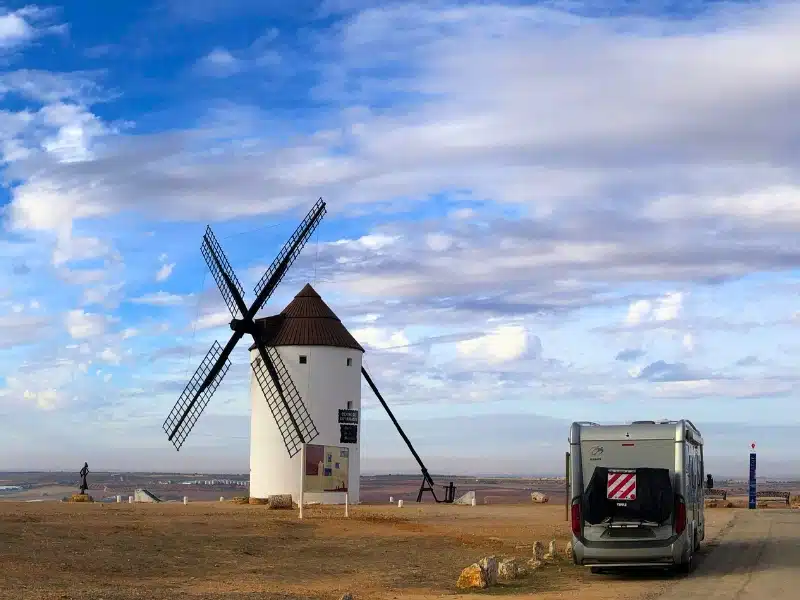
Europe Motorhome Destinations
How on earth do you choose where to go when touring Europe by campervan? There are so many different places to see, how do you fit it all in?
You could spend literally years in a camper in Europe and not see it all. If you don’t have much time or only want to take short trips, you’ll need to decide what to prioritise when route planning.
Is this a break from work to chase the sun and chill? Are you a culture vulture looking for Roman ruins and ancient worlds? Do you love hiking in the amazing national parks of Europe? Or, like most of us, looking for a bit of both?
If you’re looking for inspiration or don’t know where to start planning, our ready-made and downloadable motorhome road trips for France, Germany and Italy and three months in Europe include detailed interactive maps, travel times and distances, day-by-day ideas for destinations, hikes and activities plus recommendations for campsites and aires at every destination.
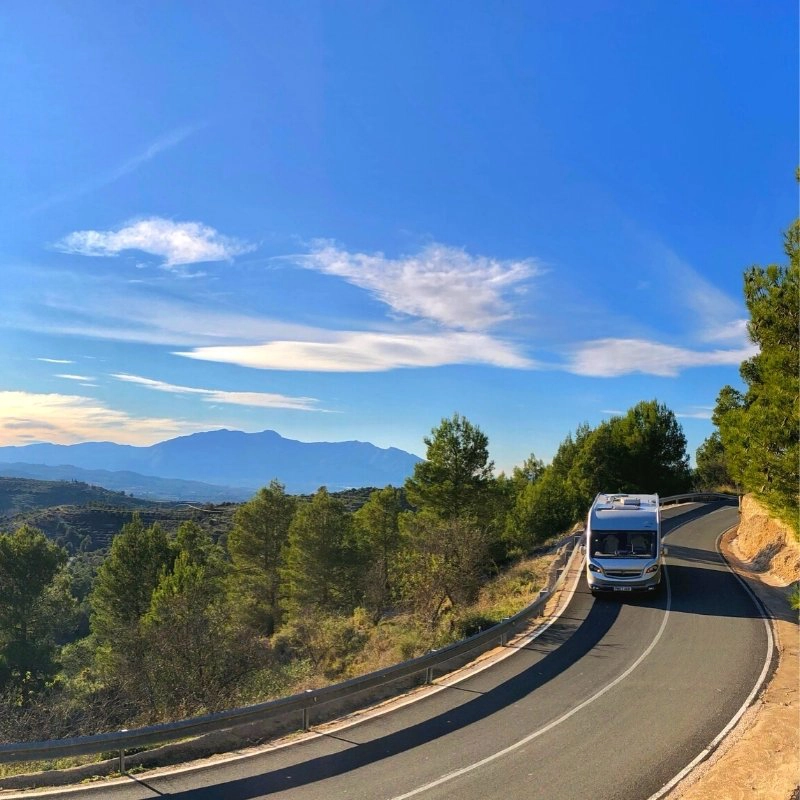
Motorhome Touring Guides
Check out our motorhome touring guides for the most popular European countries, where you’ll find information about driving, motorhome services, campsites, wild camping spots, suggested routes and the best motorhome holiday destinations in Europe.
Do you want access to our FREE resource library packed with travel resources & motorhome checklists?
Overnight Stops for Motorhomes in Europe
When it comes to where to stay overnight in a motorhome or campervan, Europe has lots of great options:
Motorhome Campsites
Campsites are a great option if you have a family or you like to stay out for more than a few days at a time. They also make great overnight stays if you’ve been on the road for a while and facilitate things like clothes washing and cleaning your van.
We love a good campsite after a month off-grid or a long trip. Suddenly, everything seems effortless – no worries about whether there will be enough sun to top up the leisure batteries and no issues about how long it takes to rinse the conditioner from my hair in the shower! If there’s also a bar, we look forward to meeting fellow motorhomers for a good chinwag!
One way to save money on your trip is to get an ACSI card. This discount card is invaluable if you’re planning to use European campgrounds, with the scheme giving you up to 60% off per night prices out of high season. This can mean a site for as low as €13 a night.
It’s worth getting this sorted before your camping trip to Europe as ACSI need a couple of weeks to post the card and books to you.
The Best Campsites in Europe – For Campers, By Campers
ACSI Camping Card – 2026 Review & Step-by-Step Guide
Motorhome Aires
Motorhome aires are a great way to stay overnight for very little money and can often be found in popular small towns and villages in the countryside of Europe from the north coast of France and the French Riv to the beaches of the Peloponnese.
French aires have paved the way for other countries to set up similar schemes, where the aire is funded by the local municipality to encourage motorhome visitors into the area.
There are now more than 10,000 aires across Europe, and many of them are like free campsites, with services often provided at no extra cost.
The costs and arrangements in each aire differ, so make sure to read the rules when you arrive. Aires cannot be booked and work on a first-come, first served basis.
Aires in popular destinations fill up quickly, so make sure you have a backup plan just in case, especially after a long drive when all you want to do is relax.
Park4Night is a great app for finding aires, or use All The Aires books to identify where you want to stay.
Motorhome Aires in France – All You Need to Know
Motorhome Aires in Spain – All You Need to Know
Wild Camping
Another popular option, motorhome wild camping is widely accepted across Europe (except Portugal, which has really cracked down on this).
If you’ve only ever motorhomed in the UK, you might be surprised at the ease with which you can camp off the grid across the continent without raising eyebrows or upsetting the locals. Much of Europe is much less densely populated than the UK and there are vast areas of land which are not populated at all that make good places for an overnight parking spot.
There are some rules (and a few unwritten ones, too) which will help you find the right spot and stay safe when wild camping. Enjoy the freedom and, hopefully, a stunning view!
Motorhome Wild Camping – Your Complete Guide
How to Find Free Overnight Motorhome Parking UK & Europe
Alternatives to Wild Camping
If you’re not a wild camper at heart but don’t always want to stay on a site, there are lots of schemes to help motorhomers stay overnight in interesting places that are easy to build into your road trip itinerary if you want to get off the beaten path.
From France Passion to Portugal Easycamp, In Camper Con Gusto in Italy and Espana Discovery, all these schemes offer a place to stay overnight in a motorhome.
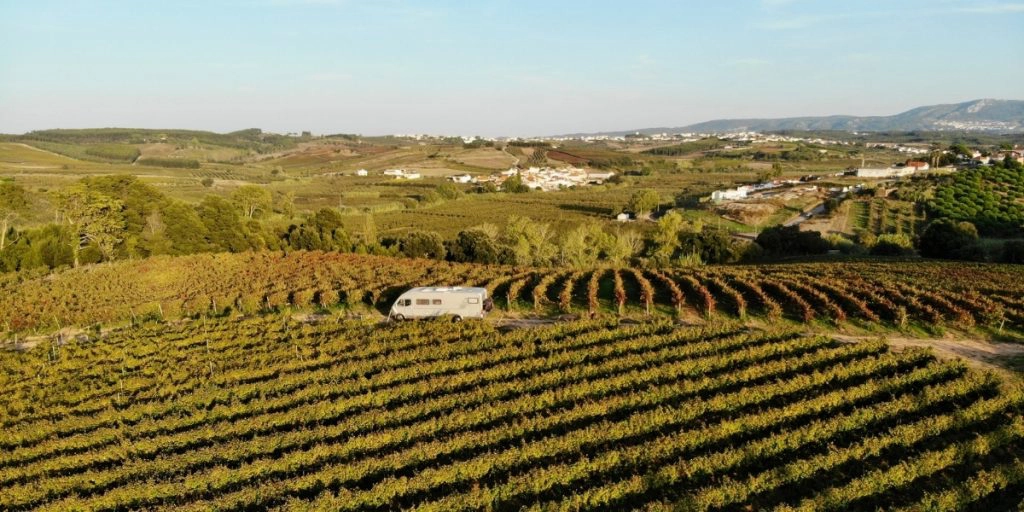
Motorhome Services in Europe
Another surprise for UK motorhomers is just how easy it is to find services in Europe, one of the great things about motorhoming on the continent. Right across western Europe you’ll find motorhome services on a regular basis, almost in every town.
Many are free, some have to be paid for, but it’s usually no more than a few euros to empty your toilet cassette and grey waste, and to fill up with fresh water. This makes touring and camping off-grid so much easier.
Services can be found in aires, fuel stations, motorway services, supermarkets and on the outskirts of towns and villages. Use Park4Night to find services near you.
RELATED POST: Living in a Motorhome in Europe – Your Complete Guide
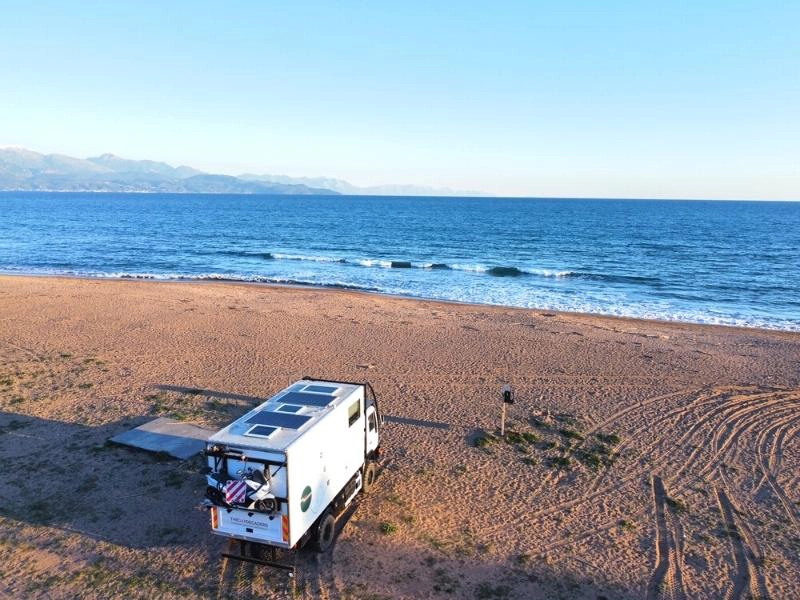
Motorhome Life in Europe
You’ve done it… you’re on the road and starting your European motorhome adventure!
Frequently Asked Questions
Whilst we all have views about van life in Europe, some topics crop up time and time again. See our post about the questions we always get asked – if your burning question is not there, then feel free to email us. We’re always happy to give an honest answer if we ca,n and we love questions.
What do you do if something goes wrong?
Things can and do go wrong. At the time, it can be very anxiety provoking, especially if you don’t speak the language, or the problem is taking a lot of time to resolve and detracting from your holiday.
We drove around France for three weeks (it was August, and EVERYWHERE was closed) with our over-cab bed held up with acro props, and it was really stressful.
A good first place to ask for help is our Facebook group – remember to share the make and model of your vehicle when asking for help. Try researching your problem on the internet, there is so much information available, you may just find the answer.
Search in Google for a motorhome workshop near you. Most of these places are run by motorhomers themselves, and they will help if they possibly can.
You will also find a list of top 20 motorhoming FAQs here – from why your fridge isn’t cooling to why your tap doesn’t work.
How much does it really cost to tour Europe in a motorhome?
Lots of people ask us how much it costs to live in a motorhome in Europe. Our answer is always the same – it depends on how you want to live.
Make sure you have emergency funds accessible to you, whether that’s cash stashed in a secret place (not our recommendation) or an emergency credit card. Read more about general safety in our motorhome security guide.
How do you make sure your relationship survives?
Being with your other half 24/7 in a small space may not be quite as romantic as you imagine! Motorhome life may come as a shock if you’re both used to rushing in from work at 6pm, collapsing in front of the TV before bed and then repeating for five days a week.
RELATED POST: Ten Truths of Travelling Together
How do you manage preventative maintenance on the road?
Prevention is always better than cure as far as motorhomes are concerned. In our experience, water and condensation are the two areas where people have the most problems.
Often, it’s a simple issue, but the first time something goes wrong can be challenging, and if you don’t know, you don’t know.
Preventing Condensation in Your Campervan: Top Tips & Tricks
An Easy Guide to Motorhome Water Systems
Are you looking for more useful motorhome advice? Check out these top posts…
Motorhoming Tips for Beginners: Essential Know How for Motorhome Life
20 Amazingly Simple Camper Hacks
Motorhome Washing Machines – Which Is Best for You?
How to Take Your First Motorhome Trip (& have an amazing time!)
On-the-Go Convenience: An Easy Motorhome Toilets Guide
Motorhoming Made Easy – Your Top 20 Questions Answered
Love it? Pin it!
